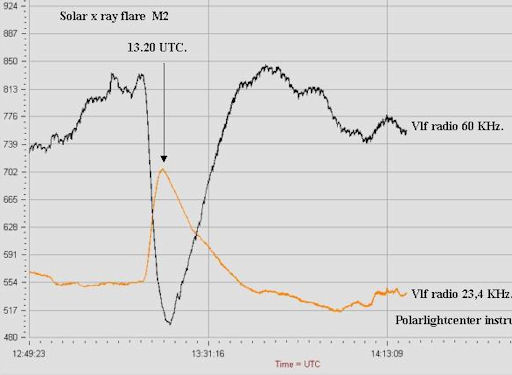The security precautions being taken for the Olympics are not only gigantic in their extent, but seem to be increasing every day. It's the inflationary tendency within security advice that should concern us, not its temporary extent. When something shows signs of growing bigger and bigger, with no tendency to deflate, it's up to us to question the power these things are acquiring over our lives. The madness of the Olympics is one thing. We should worry about this madness becoming normal, and the security industry taking over our everyday lives.
I enjoyed Lord Coe's most recent statement about the security to be deployed. I thought it had real comic potential. He said, in case you missed it, that "there has to be proportionality here. You don't want people coming to London thinking they've walked into siege city, being filmed every 20 paces they take and being bundled off pavements. It's certainly not what you're going to get legacy tourism from. There is no appetite for risk."
Particularly amusing is Lord Coe's promise that people who come to London are not going to be filmed every 20 paces. This morning, taking a walk down Clapham High Street, I decided to count the cameras. It's 550 metres long, and this morning I counted 40 CCTV cameras, including ones performing the vital work of guarding the entrances to a Belgian moules restaurant, the worse of the two dry-cleaners, and a crap bar. I may have missed a few, but "being filmed every 20 paces" sounds about right to me.
Let's take a look at some of these "proportional" measures, and how they have grown in recent months. The number of security personnel within the venues is increasing from 10,000 to 23,700 – let us not be cynical, and suggest that the advice came from people keen to see the 100 metres final – and 12,000 extra police and 6,000 soldiers will be on the streets. A warship is to be deployed in the Thames – what against, the Spanish Armada? Surface-to-air missiles will be on standby.
Let me just write that again: surface-to-air missiles will be on standby. Well, I've been on holiday in some fairly unlikely places, including Khartoum in the middle of a civil war. I amused myself by driving up and down slowly outside the Presidential palace, where the bored military will salute you if you lower the window and make an ambassadorial gesture. But this is London. Warships? Surface-to-air missiles? An army of 42,000? Wellington only needed 68,000 at Waterloo. What kind of "proportionality" is being served here?
Of course, nobody knows what "proportionality" means until the threat emerges, and the defensive measures are shown to be grossly inadequate, or totally unnecessary. If somebody decides to explode a dirty bomb outside a crap Clapham bar tomorrow, making the area uninhabitable for years to come, then I don't think surface-to-air missiles will be much use. On the other hand, if the biggest threat turns out to be a nutty jihadi on a soap-box on the Common, the surface-to-air option starts to look like an expensive waste of time.
The security industry, which by now contains some of the largest employers in the world, and the military industry with which it overlaps, have this in common with other major industries. They constantly need to expand, to find new sources of income and enterprise. If they can persuade customers that they require new security measures, however exotic, they will have succeeded in exactly the same way that the fashion industry survives by persuading rich women that they absolutely must have an expensive new handbag.
And, as Lord Coe says, there is sadly no appetite for risk in this area. Not just at the Olympics – ever. Who wants to be the person who decides, just before a second 9/11, that we really don't want warships and surface-to-air missiles in the Thames? CCTV cameras are perfectly pointless, and have been shown to have absolutely no effect on crime figures after a year. Still, who wants to be the one shop in the street without a CCTV pointing impotently at the punters? Who wants to tell the security salesman, "You know, I really don't want a thuggish doorman standing outside my suburban shoe shop. I don't think it's necessary"?
It's easy to persuade people that security measures ought to be installed, however patently absurd, however much an invasion of personal freedom they may be. Suddenly, last year, it was necessary to film air passengers naked. Suddenly, we need more than twice as many security guards and a warship in the Thames because of a festival of minor sports in London. And afterwards, who wants to be the person to decide that the new security measures are no longer necessary, that the warship may be stood down?
Once they arrive, they are here to stay. The surface-to-air missiles will be needed for the Paralympics, the Commonwealth Games, the FA Cup Final, the Proms, the Baftas, May Week and the Henley Regatta. There will always be someone from the industry to argue that Soviet-style levels of control and bristling threats of defensive violence are necessary and "proportionate". It's for us to be brave, and remind ourselves that a healthy appetite for risk is part of living in a free country.


 This is the first of three in the order of timing of events. You see the classic Masonic checkered floor as part of the landscape that they control. You see the classic blond-haired, blue-eyed Arian “youth” in the classic Masonic heel-to-heel 90 degree stance. Take note to the burning bush blowing dead West. I see this as the Western World being burned and this is the current state of the dismantling affairs of the U.S. while Americans (in general) go unaware. I see this because of the white man right next to the burning bush and he is wearing a red sweater and blue jeans. Red, white and blue. He represents the majority of unaware Americans and remains distracted via the book he is reading while the bush (which again represents the Western World) is burning to the ground right next to him. Now, take a look at the female puppet on strings being controlled. Could this mean that the next President will be a woman? Most important is the group of characters at the bottom-left. This clearly shows a colonial forefather arguing with modern day “suits”. This is highly suggestive of constitutionalists arguing with the “New World” unfolding. Notice they are pointing to the Masonic Arian as the subject at hand? This suggests the Tea Party Movement and the fight against the coming-out of World Government. This is (now) in the first of these three key time eras.
This is the first of three in the order of timing of events. You see the classic Masonic checkered floor as part of the landscape that they control. You see the classic blond-haired, blue-eyed Arian “youth” in the classic Masonic heel-to-heel 90 degree stance. Take note to the burning bush blowing dead West. I see this as the Western World being burned and this is the current state of the dismantling affairs of the U.S. while Americans (in general) go unaware. I see this because of the white man right next to the burning bush and he is wearing a red sweater and blue jeans. Red, white and blue. He represents the majority of unaware Americans and remains distracted via the book he is reading while the bush (which again represents the Western World) is burning to the ground right next to him. Now, take a look at the female puppet on strings being controlled. Could this mean that the next President will be a woman? Most important is the group of characters at the bottom-left. This clearly shows a colonial forefather arguing with modern day “suits”. This is highly suggestive of constitutionalists arguing with the “New World” unfolding. Notice they are pointing to the Masonic Arian as the subject at hand? This suggests the Tea Party Movement and the fight against the coming-out of World Government. This is (now) in the first of these three key time eras.  This is clearly inside the FEMA camp “era” we will soon move towards. You can see the back wall and you can see the side wall with barbed wire. You see the Elite above circling free and naked in their wealth and disgusting power while being separated from the chaos below via the net. They continue to oversee. Key characters in the crowd are Hazmat and Marines carrying rifles. You see all races and creeds as well as a Catholic Bishop, a Nun, a handcuffed man, a gas masked person, etc. You see an active burning industrial building in the background suggesting a crematory (think of the possibility of a mass of dead infected people from a biohazard release.) You see the classic Nazi gold eagle and flags. You see blank street signs suggesting you have nowhere to go. You see blank protest signs suggesting you have no voice. You see a cameraman in the dead center of the bottom of the painting with his camera looking right back at you (with your camera.)
This is clearly inside the FEMA camp “era” we will soon move towards. You can see the back wall and you can see the side wall with barbed wire. You see the Elite above circling free and naked in their wealth and disgusting power while being separated from the chaos below via the net. They continue to oversee. Key characters in the crowd are Hazmat and Marines carrying rifles. You see all races and creeds as well as a Catholic Bishop, a Nun, a handcuffed man, a gas masked person, etc. You see an active burning industrial building in the background suggesting a crematory (think of the possibility of a mass of dead infected people from a biohazard release.) You see the classic Nazi gold eagle and flags. You see blank street signs suggesting you have nowhere to go. You see blank protest signs suggesting you have no voice. You see a cameraman in the dead center of the bottom of the painting with his camera looking right back at you (with your camera.)  This is the final sequence preceding the FEMA camp era. Here you see the surviving slave population working below to acquire the wealth of the world. The shovel heads are rich gold in color suggesting gold as the resource to secure. Look at the next level of architecture above ground. You see the higher-level (educated/skilled) slaves re-building the “New World” while the Elite sleep restfully above in the hills continuing to oversee all operations. Although the basic architecture is similar to the current architecture of society, the picture is highly suggestive of the “rebuilding era” due to the clear portrayal of clean landscapes and “work” underway. This is the final era they are working towards once most of us have been eliminated and the “New World” is underway being rebuilt. What does “EQ” stand for on the red sign?
This is the final sequence preceding the FEMA camp era. Here you see the surviving slave population working below to acquire the wealth of the world. The shovel heads are rich gold in color suggesting gold as the resource to secure. Look at the next level of architecture above ground. You see the higher-level (educated/skilled) slaves re-building the “New World” while the Elite sleep restfully above in the hills continuing to oversee all operations. Although the basic architecture is similar to the current architecture of society, the picture is highly suggestive of the “rebuilding era” due to the clear portrayal of clean landscapes and “work” underway. This is the final era they are working towards once most of us have been eliminated and the “New World” is underway being rebuilt. What does “EQ” stand for on the red sign?